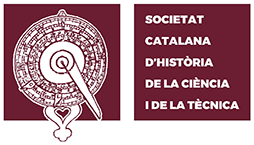Col·loquis de la SCHCT (2020 – 2021)
Cicle: Science and documentaries in the Twentieth century
Dimecres 04 novembre de 2020, 18.00h.
“Presentació del cicle
Science and documentaries in the Twentieth century”
Sessió online: Enllaç
Aquest cicle està format per tres conferències asincròniques que estaran a l’abast de totes les persones interessades durant la primera setmana de novembre a la pàgina www.uv.es/ihmc. Les conferències podran ser consultades junt als documentals esmentats per part dels conferenciants que participaran conjuntament a una taula rodona el dia 25 de novembre de 2020. Els enllaços a les conferències i la taula rodona seran informats als propers butlletins. Les conferències són:
1) “Si es bueno, es Bayer”. Health education, corporate communication and the filmic image-building of German pharma industry as the world’s pharmacy”
Christian Bonah
Abstract
In many Latin and South American countries the slogan “Si es Bayer, es Bueno” has become a familiar, popular expression testifying to what corporations have tried to measure for a long time: spectator impact. Audio-visual communication has been at the forefront of promotional strategies for the German pharmaceutical giant Bayer ever since the 1920s when the corporation engaged with the concept of Wertwerbung, literally “value advertisement”. Promotional health education films participated strongly in corporate name, brand and image building. Building consumer trust in a company and its name was essential in a time when Bayer had lost many of its drug patents after WWI. The company established its own independent Filmstelle, a unit for film planning and production and developed and operated in the 1930s Bayer sound film trucks that toured remote areas throughout Germany, Europe and worldwide for public film shows. Building on recent scholarship in the field of industrial, sponsored, non-fiction and most recently utility film studies, the contribution will analyse how Bayer established its film production unit and its film production for a worldwide market in the 1920s and 1930s. Furthermore, we will ask how this corporate strategy played out to promote at the same time health education, modern German science and industry and the corporate brand behind the films.
Videos:
- In the service of humanity (Dir. W. Ruttmann, GER, 1938)
- In einer Stunde um die Welt [In one hour around the world] (Dir. J. Pinschewer, GER, 1931)
- Malaria (Dir. U. Kayser, GER, 1934)
Film screening is available at: https://medfilm.unistra.fr
Note: Medfilm has in principle an open access policy for higher education institutions and non-commercial educational use through Edugain (connect via SSO at the top right). If access should be blocked please contact us for assistance at: medfilm@unistra.fr
2) “When artifice becomes evidence. A look at the origins of the wildlife MOD genre”
Jean-Baptiste Gouyon
Abstract
“The emergence of a professional culture of wildlife filmmaking in Britain in the 1960s was accompanied by a redefinition of the value of artifice and intervention for the production of reliable and true-to-nature representations of wildlife. As long as wildlife filmmaking was part of the cultural space of amateur natural history, displays of non-intervention and self-effacement in the field were seen as guarantees of trustworthiness for filmmakers. But once a professional culture of wildlife filmmaking started to be developed to be part of the cultural space of science, displays of intervention and of the skilful use of artifice, become evidence of reliability for filmmakers.
This talk looks at this transition, focusing on two making-of documentary programmes, Unarmed Hunters (BBC, 1963) and The Making of a Natural History Film (BBC, 1972), to reflect on this transition in the context of the history of television in Britain”.
Video: The Making of a Natural History Film (1972)
3) “El hombre y la tierra [Man and the Earth, Félix Rodríguez de la Fuente, 1974-1981], and the construction of the environment in 1970s Spain”
Carlos Tabernero
Abstract
This seminar will offer a historical reading of the acclaimed TV series El Hombre y la Tierra (Man and the Earth, 1974-1981), produced and directed by Felix Rodríguez de la Fuente (1928-1980), a pioneering and highly influential naturalist, activist and natural history author and broadcaster, in the complex socio-political scene of the late Franco’s dictatorship and the changeover to the democratic administration. We will examine how, in this series, Rodríguez de la Fuente blended his very particular narratives about local wildlife with the depiction of scientific and media practices, all within a quite complex cross-platform storytelling strategy in which television was pivotal. It will also focus on how he played these narrative and technical elements together to create a quite successful feedback loop to actively engage audiences in naturalist-like practices in their everyday-life endeavors.
Situated in such a noticeably changing context regarding politics, science, media, and the perception of the environment, this case study will allow us to discuss historically how Rodríguez de la Fuente’s natural history narratives addressed the establishment’s concerns and strategies regarding the long-sought and promised modernization of Spain. Man and the Earth, while featuring the natural sciences as both focal point and main source of knowledge, arguably became a keystone of intensely negotiated strategies of transformation, both in television and society. By contextualizing this series in its specific social, political and cultural setting, as well as within a larger framework of science popularization, this seminar will thus contribute to the understanding of key features of contemporary, media-driven science communication.
Video: El hombre y la Tierra (Fauna ibérica) – El buitre sabio


